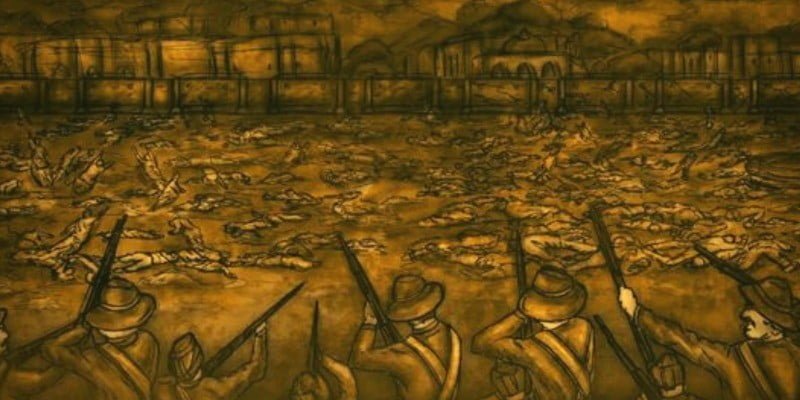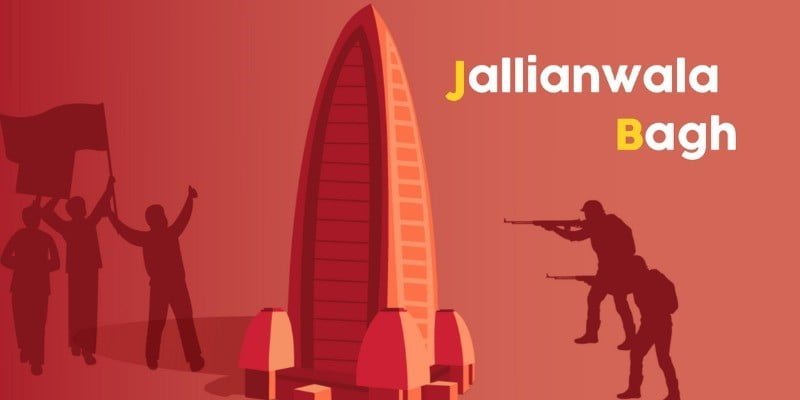Jallianwala Bagh Massacre: Understanding the Politics and Tragedy Behind India’s Fight for Independence:
The Jallianwala Bagh massacre stands as a defining moment in India’s struggle for independence. In 1951, the Indian government constructed a memorial at the location to pay homage to the valor of the revolutionaries and commemorate the lives lost in the tragic event.
This structure has evolved into an icon representing the fight and sacrifice of those who battled for India’s emancipation, perpetually invoking patriotism among the youth of the country. In March 2019, the Yaad-e-Jallian Museum was inaugurated, providing an accurate and comprehensive account of the massacre.
The museum offers visitors a profound insight into the circumstances leading to the disaster. The actions taken by those involved, and the long-lasting influence they had on Indian society. The museum serves as a reminder of the importance of defending justice and the sacrifices one must make to attain freedom.
The Jallianwala Bagh Memorial and Yaad-e-Jallian Museum epitomize India’s fight for freedom, the resilience of revolutionaries, and an unwavering pursuit of justice and liberty.
Politics Behind It:
The tragic events of the April 1919 massacre were not a singular occurrence but rather a culmination of various underlying factors. To comprehend the events that transpired on that day, it is crucial to examine the events that preceded it. The Indian National Congress had anticipated that self-governance would be granted following the conclusion of World War I. But the Imperial administration had alternative intentions. In essence, understanding the context leading up to the tragedy is critical to grasp the significance of the April 13th massacre.
What Led to The Jallianwala Bagh Massacre?
The Rowlatt Act, also known as the Black Act, was passed on March 10, 1919, by the British government in India. This law authorized the government to imprison or confine, without a trial, any person associated with seditious activities. This act triggered nationwide unrest, and in response, Mahatma Gandhi initiated Satyagraha to protest against it.

Gandhi’s Satyagraha Movement:
On April 7, 1919, Gandhi published an article called Satyagrahi, describing ways to oppose the Rowlatt Act. British authorities deliberated actions against Gandhi and Satyagraha leaders, barring Gandhi’s Punjab entry and authorizing arrest for non-compliance.
Deportation of Gandhi to Burma:
Sir Michael O’ Dwyer, the Lieutenant Governor of Punjab from 1912 to 1919. He suggested that Gandhi be deported to Burma, but this was opposed by his fellow officials. As they felt it might instigate the public. Dr. Saifuddin Kitchlew and Dr. Satyapal, two prominent leaders who were a symbol of Hindu-Muslim unity, organized a peaceful protest against the Rowlatt Act in Amritsar.
The arrest of Dr. Satyapal and Dr. Kitchlew:
During April 9, 1919’s Ram Navami event, O’Dwyer arrested Dr. Satyapal and Dr. Kitchlew, foreseeing public backlash despite their non-violent stance. He invited the two gentlemen to his house on the morning of April 10th, and they unsuspectingly responded to the call, no doubt relying on his honor as an Englishman. After a half-hour stay as guests, they were seized and escorted to Dharmasala under police guard. Mr. Irving told this story without showing any sign of having done an act that very few Englishmen would care to do.
The Amritsar Massacre:
On April 10, 1919, the infuriated protestors marched to the Deputy Commissioner’s residence to demand the release of their two leaders. Here they were fired upon without any provocation. Many people were wounded and killed. The protestors retaliated with lathis and stones and attacked any European who came in their way.
Attack on Miss Sherwood:
One of the mishaps was the attack on Miss Sherwood, Superintendent of the Mission School in Amritsar. According to her statement, on April 10, 1919, she was assaulted by a mob chanting “Kill her, she is English” and “Victory to Gandhi, Victory to Kitchlew,” causing her to lose consciousness. The mob went away assuming she was dead. However, a counter-narrative is provided by the ‘Lokasangraha’, a weekly published out of Bombay, which denies claims of severe harm, stating instead that the wounds inflicted were minimal.
Consequences of the Amritsar Massacre:
The Amritsar Massacre, also known as the Jallianwala Bagh Massacre, left a deep scar on the Indian psyche. The indiscriminate firing on unarmed protestors was a blatant display of British colonial brutality.
The Day of The Massacre:
In 1919, the Punjab Government in India passed the Rowlatt Act, which aimed to suppress all opposition. The British authorities considered a public gathering on April 13, 1919, in Jallianwala Bagh to be a political event. However, the locals had gathered to celebrate Baisakhi.
Protest Gathering and Prohibition Orders:
Despite General Dyer’s orders prohibiting unlawful assembly, people gathered at Jallianwala Bagh to discuss two resolutions. One condemned the firing on April 10, and the other requested the release of their leaders.
General Dyer’s Actions:
Upon hearing the news, Brigadier-General Dyer headed to the Bagh with his troops. He entered the Bagh, deployed his soldiers, and ordered them to open fire without giving any warning. The people present tried to flee through the exits, but Dyer directed his soldiers to fire at the exits.
The Massacre:
The firing continued for 10-15 minutes, with an estimated 1650 rounds fired. The shooting only stopped after the ammunition ran out. General Dyer and Mr. Irving reported 291 dead, but other reports, including that of a committee led by Madan Mohan Malviya, estimated over 500 dead.

The Aftermath of the Massacre:
General Dyer’s Testimony:
During the Hunter Commission inquiry, General Dyer was unapologetic about his actions and stated that he had fired and fired well. When questioned about his failure to attend to the wounded, he responded that it was not his job and that the wounded should have gone to the open hospitals.
The Verdict:
The Hunter Commission inquiry deemed the massacre as one of the darkest episodes of British administration and censured General Dyer for his actions. The Commander-in-Chief directed Dyer to resign from his position as Brigade Commander and informed him that he would receive no further employment in India.
Tagore’s Renunciation:
The news of the massacre led Rabindranath Tagore to renounce his Knighthood in protest against British rule in India. The Jallianwala Bagh massacre remains a significant event in India’s struggle for independence. Then the Hunter Commission’s inquiry shed light on the brutalities committed by the British administration. It also highlighted the need for India to gain independence and put an end to the oppressive British rule.
Conclusion:
The Jallianwala Bagh massacre was a tragic event in India’s fight for independence, which occurred on April 13, 1919. The events leading up to the massacre included the passing of the Rowlatt Act, which authorized the government to imprison or confine, without a trial, any person associated with seditious activities. Mahatma Gandhi initiated Satyagraha to protest against the Rowlatt Act, leading to his arrest and deportation to Burma. Dr. Saifuddin Kitchlew and Dr. Satyapal organized a peaceful protest against the Rowlatt Act in Amritsar. But they were arrested and deported, leading to public outrage.
Protestors seeking leaders’ release were fired upon on April 10, 1919, sparking Amritsar Massacre. April 13, 1919, the Jallianwala Bagh gathering was marked as a political event by the British. General Dyer ordered his troops to fire upon the unarmed gathering, killing hundreds of people and injuring many more. The Jallianwala Bagh massacre remains a poignant episode in India’s fight for independence, leaving a profound impact on the nation’s collective memory.
**********
Disclaimer:- Views expressed are the author’s own




